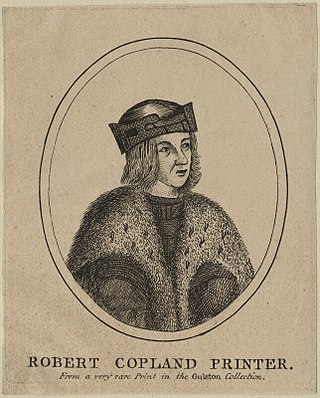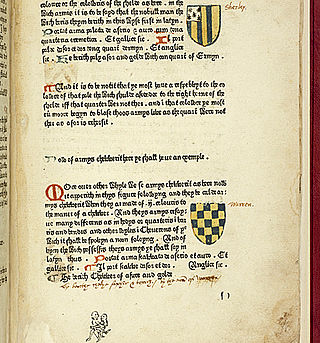This article presents lists of literary events and publications in the 16th century.
This article contains information about the literary events and publications of 1534.
This article presents lists of the literary events and publications in 1524.
This article contains information about the literary events and publications of 1523.
This article contains information about the literary events and publications of 1520.
This article contains information about the literary events and publications of 1513.
This article contains information about the literary events and publications of 1511.
This article contains information about the literary events and publications of 1510.
This article contains information about the literary events and publications of 1509.
This article contains information about the literary events and publications of 1500.

Wynkyn de Worde was a printer and publisher in London known for his work with William Caxton, and is recognised as the first to popularise the products of the printing press in England.

Juliana Berners, O.S.B.,, was an English writer on heraldry, hawking and hunting, and is said to have been prioress of the St Mary of Sopwell, near St Albans in Hertfordshire.

Robert Copland was an English printer and author. He is said to have been a servant of William Caxton, and certainly worked for Wynkyn de Worde. The first book to which his name is affixed as a printer is The Boke of Justices of Peace (1515), at the sign of the Rose Garland, in Fleet Street, London. Anthony à Wood supposed, on the ground that he was more educated than was usual in his trade, that he had been a poor scholar of Oxford.

John Skelton, also known as John Shelton was an English poet and tutor to King Henry VIII of England. Writing in a period of linguistic transition between Middle English and Early Modern English, Skelton is one of the most important poets of the early Tudor period. Though strongly influenced by the Chaucerian tradition, Skelton is mostly remembered for his poems on everyday themes and invectives, written in an irregular metre now usually called Skeltonics. He also wrote the first secular morality play in English, Magnyfycence, an important landmark in the development of English Renaissance theatre.

Richard Pynson was one of the first printers of English books. Born in Normandy, he moved to London, where he became one of the leading printers of the generation following William Caxton. His books were printed to a high standard of craftsmanship, and his Morton Missal (1500) is regarded as among the finest books printed in England in the period.
Nationality words link to articles with information on the nation's poetry or literature.
-- Lines 12-21, "The Tunnyng of Elynour Rummyng" by John Skelton. The poem is thought to have been first published this year.
Nationality words link to articles with information on the nation's poetry or literature.

The Book of Saint Albans, originally Boke of Seynt Albans, is the common title of a book printed in 1486 that is a compilation of matters relating to the interests of the time of a gentleman. It was the last of eight books printed by the St Albans Press in England. It is also known by titles that are more accurate, such as The Book of Hawking, Hunting, and Blasing of Arms. The printer is sometimes called the Schoolmaster Printer. This edition credits the book, or at least the part on hunting, to Juliana Berners as there is an attribution at the end of the 1486 edition reading: "Explicit Dam Julyans Barnes in her boke of huntyng".
William Copland was an English printer. He printed popular works of the day, such as chivalric romances.





